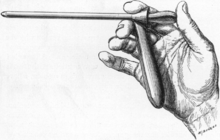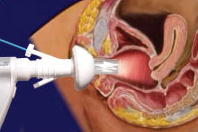
Gynaecology or gynecology is the area of medicine that involves the treatment of women's diseases, especially those of the reproductive organs. It is often paired with the field of obstetrics, forming the combined area of obstetrics and gynaecology (OB-GYN).

The Johns Hopkins Hospital (JHH) is the teaching hospital and biomedical research facility of Johns Hopkins School of Medicine in Baltimore, Maryland. Founded in 1889, Johns Hopkins Hospital and its school of medicine are considered to be the founding institutions of modern American medicine and the birthplace of numerous famed medical traditions, including rounds, residents, and house staff. Several medical specialties were founded at the hospital, including neurosurgery by Harvey Cushing and Walter Dandy, cardiac surgery by Alfred Blalock and Vivien Thomas, and child psychiatry by Leo Kanner. Johns Hopkins Children's Center, which serves infants, children, teens, and young adults aged 0–21, is attached to the hospital.

Harvey Williams Cushing was an American neurosurgeon, pathologist, writer, and draftsman. A pioneer of brain surgery, he was the first exclusive neurosurgeon and the first person to describe Cushing's disease. He wrote a biography of physician William Osler in three volumes.

Alexander Johnston Chalmers Skene was a British-American gynaecologist from Scotland who described what became known as Skene's glands.

Forceps are a handheld, hinged instrument used for grasping and holding objects. Forceps are used when fingers are too large to grasp small objects or when many objects need to be held at one time while the hands are used to perform a task. The term "forceps" is used almost exclusively in the fields of biology and medicine. Outside biology and medicine, people usually refer to forceps as tweezers, tongs, pliers, clips or clamps.
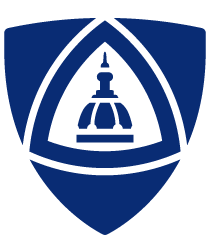
The Johns Hopkins University School of Medicine (JHUSOM) is the medical school of Johns Hopkins University, a private research university in Baltimore, Maryland. Founded in 1893, the School of Medicine shares a campus with Johns Hopkins Hospital and Johns Hopkins Children's Center, established in 1889.

William Stewart Halsted, M.D. was an American surgeon who emphasized strict aseptic technique during surgical procedures, was an early champion of newly discovered anesthetics, and introduced several new operations, including the radical mastectomy for breast cancer. Along with William Osler, Howard Atwood Kelly and William H. Welch, Halsted was one of the "Big Four" founding professors at the Johns Hopkins Hospital. His operating room at Johns Hopkins Hospital is in Ward G, and was described as a small room where medical discoveries and miracles took place. According to an intern who once worked in Halsted's operating room, Halsted had unique techniques, operated on the patients with great confidence and often had perfect results which astonished the interns.
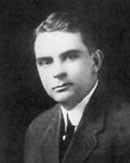
Walter Edward Dandy was an American neurosurgeon and scientist. He is considered one of the founding fathers of neurosurgery, along with Victor Horsley (1857–1916) and Harvey Cushing (1869–1939). Dandy is credited with numerous neurosurgical discoveries and innovations, including the description of the circulation of cerebrospinal fluid in the brain, surgical treatment of hydrocephalus, the invention of air ventriculography and pneumoencephalography, the description of brain endoscopy, the establishment of the first intensive care unit, and the first clipping of an intracranial aneurysm, which marked the birth of cerebrovascular neurosurgery.
Edmund Converse Peirce II was an American physician who was professor and director of hyperbaric medicine at the Mount Sinai School of Medicine in Manhattan, New York City from 1966 to 1991. During his career, Peirce published over 150 research articles and is notable for his well-regarded contributions to the refinement of artificial circulatory technologies including the membrane oxygenator.

Max Brödel was a medical illustrator. Born in Leipzig, Germany, he began his artistic career after graduating from the Leipzig Academy of Fine Arts, working for Carl Ludwig. Under Ludwig's instruction, Brödel gained a basic knowledge of medicine and became recognized for his detailed medical illustrations. In the late 1890s, he was brought to the Johns Hopkins School of Medicine in Baltimore to illustrate for Harvey Cushing, William Halsted, Howard Kelly, and other notable clinicians. In addition to being a prolific medical illustrator, he developed new artistic techniques such as the carbon dust technique that helped the advancement of the quality and accuracy of medical illustrations for physicians. In 1911, he presided over the creation of the first Department of Art as Applied to Medicine; located at the Johns Hopkins School of Medicine, it continues to train medical illustrators to this day. His graduates spread out across the world, and have founded a number of other academic programs.

The Sloane Hospital for Women is the obstetrics and gynecology service within NewYork-Presbyterian Hospital and the Department of Obstetrics and Gynecology of the Columbia University College of Physicians and Surgeons (P&S) in New York City. It was founded in 1886 with Columbia P&S as a training and treatment center for obstetrics. It has provided over 100 years of obstetrical care. The hospital is located within Morgan Stanley Children's Hospital.
Urogynecology or urogynaecology is a surgical sub-specialty of urology and gynecology.

John Whitridge Williams was a pioneering obstetrician at Johns Hopkins Hospital. Williams was also an acclaimed author, as he was able to contribute 137 publications regarding his findings.

Robert Battey was an American physician who is known for pioneering a surgical procedure then called Battey's Operation and now termed radical oophorectomy.
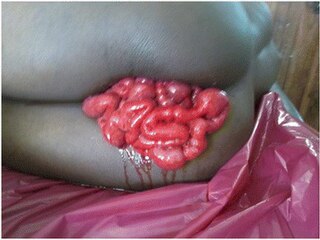
Vaginal evisceration is an evisceration of the small intestine that occurs through the vagina, typically subsequent to vaginal hysterectomy, and following sexual intercourse after the surgery. It is a surgical emergency.
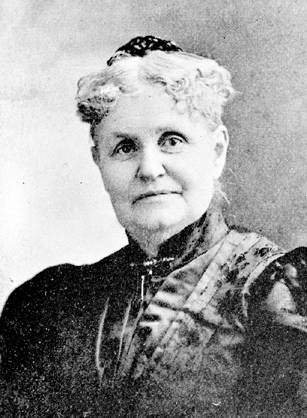
Mary Amanda Dixon Jones was an American physician and surgeon in the field of obstetrics and gynecology, who was the first American physician to propose and perform a total hysterectomy to treat a tumor in the uterine muscle (myoma). Jones had a successful career until her work doing gynecological surgery at Woman's Hospital of Brooklyn drew the attention of the news media, and she was the subject of a 24-article investigative expose by the Brooklyn Eagle. As a result, she was charged with one count of murder, and one count of manslaughter. She was found not guilty, and sued the Eagle. She lost the libel case, and was forced to close her medical practice. Jones then spent the last years of her medical career researching the tissue pathology of gynecological conditions.

Louis A. Perrotta was an Italian-American surgeon in New York. His research in spinal anesthesia in 1943 demonstrated that pain control during childbirth could be achieved. His clinical study showed that rapid painless childbirth was safe and possible with the use of regional anesthesia at a time when this was not accepted common practice. The study utilized two controversial and polarizing techniques in obstetrics: Spinal anesthesia and manual cervical dilation. Perrotta was an owner and founder of Pelham Bay General Hospital in New York in 1960 where he was the Director of Surgery. Perrotta held academic positions as Professor of Pediatrics at Bellevue Medical College, Clinical Professor at New York University School of Medicine and Associate Clinical Professor of Surgery New York Medical College. Perrotta served as the house physician to the Metropolitan Opera House in New York City from 1950 to 1966 and as a personal physician to the opera stars from the Met. Perrotta was interviewed on Midday Live regarding his work ethic and professional life.

Frederic Atwood Besley FACS was an American military medical doctor and surgeon during World War I. He founded the American College of Surgeons, Surgery Gynecology and Obstetrics and founding member of the American Board of Surgery.

Elizabeth Hurdon was a British gynecologist and pathologist, considered the first gynecological pathologist.


